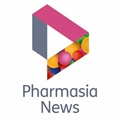After Signing Pact With Chinese Regulators, U.S. Pharmacopeia Seeks To Develop New Tests To Help Prevent Deadly Episodes of Adulteration
This article was originally published in PharmAsia News
Executive Summary
BEIJING - After signing an agreement on cooperation with China's Center for Disease Control and Prevention in the wake of a series of contaminated drug and food scandals, leaders of the U.S. Pharmacopeial Convention are working to develop new tests that could be used to safeguard the global supply chain
|
BEIJING - After signing an agreement on cooperation with China's Center for Disease Control and Prevention in the wake of a series of contaminated drug and food scandals, leaders of the U.S. Pharmacopeial Convention are working to develop new tests that could be used to safeguard the global supply chain. USP scientists are exploring new means to detect ingredients that have been adulterated and show up in the global marketplace from such countries as China. And when dependable new tests are finalized, they will be rapidly disseminated to help protect peoples across the continents, according to USP Food Standards Director Markus Lipp. "In an increasingly globalized era, it is critical that any alternative tests that are developed be made available to the scientific and regulatory community all around the world," Lipp said in an interview. USP spokeswoman Francine Pierson noted that cases of contamination of pharmaceuticals and food in China and in other countries around the world have caused illness and even deaths in the last two years, and that global supply chains for food and drug ingredients have been threatened by these incidents. Confidence in China-sourced imports and in its food and regulatory system has been hurt as a result. USP Signs New Pact With Chinese Regulators Earlier this summer, as part of a two-year drive to step up cooperation with Chinese scientists and regulators, USP head Roger Williams traveled to Beijing to sign a new pact with China's Center for Disease Control. Part of the memorandum of understanding states Chinese scientists will be appointed to join USP's Expert Committees for the 2010-2015 cycle. USP leaders have worked to forge closer ties with counterparts across China, and have signed a succession of agreements since 2008 with the Chinese Pharmacopoeia Commission, with China's National Institute for the Control of Pharmaceutical and Biological Products - which supervises quality controls for drugs across the country - and with Chinese provincial authorities (Also see "U.S. Pharmacopeia Ramps Up Drug Quality, Safety Cooperation Across Asia With Four New Agreements With China, ASEAN States" - Scrip, 26 Jun, 2009.). USP Standards Going Global Although initially created to help ensure drug quality in the U.S., USP standards have since been used in more than 130 countries, and the group's 350-member Council of Experts has begun to resemble the United Nations, with scientists elected to the council from around the world. Currently about 20 percent of the Council is made up of international experts. Although the new MOU covers the translation and potential use of the USP Food Chemicals Codex inside China, it is part of a much broader strategy aimed at upgrading standards for food, drugs, active pharmaceutical ingredients and excipients in both countries. Last year, USP signed agreements with Chinese regulators that could help elevate safety and quality standards on drugs produced in China, including those exported to North America. Those pacts, along with the new MOU, are all aimed at strengthening USP's ties with Chinese regulators and scholars, for instance by expanding a scientist exchange program and by inviting leading Chinese professionals to join the American group's Council of Experts. The memorandum of understanding just signed by USP's Roger Williams provides for translation of the USP Food Chemicals Codex monograph standards into Chinese, and use as a reference in the development of Chinese food additive standards. It also commits the two sides to cooperate in the development of good manufacturing practices and other approaches for improvements relating to packaging and nutrition. Stepped-up Efforts Stem From Heparin Incident USP efforts to integrate Chinese experts and regulatory officials into its leadership structure and to develop common standards on drug and food quality have gained momentum since Chinese-sourced heparin, deliberately contaminated with a look-alike chemical, triggered more than 140 extreme adverse reactions and deaths across American hospitals two years ago (PharmAsia News, Dec. 3, 2009). Stepped-up action by both countries also came after the widespread sales of milk products deliberately adulterated with the toxic chemical melamine for economic gain, which led to the hospitalization of hundreds of thousands of Chinese infants in 2008, and to death in extreme cases. Since then, U.S. FDA has identified specific pharmaceutical ingredients that should be screened for the presence of melamine (Also see "One Year After Spike In American Deaths From China-sourced Contaminated Heparin, U.S. Pharmocopeia Issues Revised Standards" - Scrip, 7 Aug, 2009.). USP scientists are now looking to develop new tests for protein levels in food and milk powder that do not simply measure nitrogen levels. The test currently used, developed in 1883, measures for nitrogen as a marker for the level of proteins in the foods rather than for protein itself, and therefore has been tricked by products containing the toxic chemical melamine, which is rich in nitorgen. This test does not identify melamine or other contaminants. "Our aim now is to take the motivation for adulteration out of the supply chain," explained Markus Lipp. As testing breakthroughs are made, added USP scientist Jeffrey Moore, "I think it's our job to disseminate scientific advances as widely as possible to protect worldwide public health." - Kevin Holden ([email protected]) |
